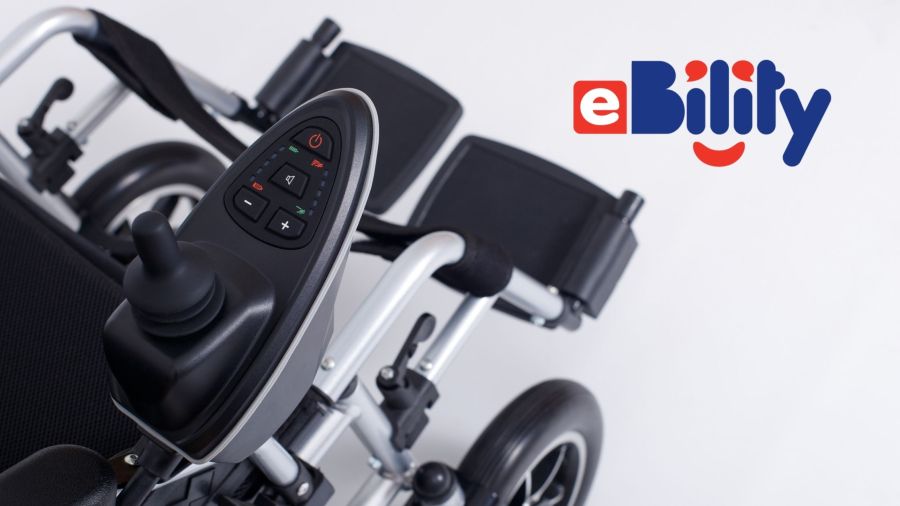
Choosing the Right Wheelchair for You
Mobility devices, such as wheelchairs, are an essential part of daily living for people with mobility and spinal cord disabilities.
Having a reliable wheelchair can significantly improve access to mainstream businesses and services and enhance the quality of life, access and inclusion for the wheelchair user.
However, there are a few things to consider before buying a wheelchair for yourself or a loved one.
So, for your guidance, we’ve outlined the different types of wheelchairs available along with their benefits to ensure you find the right wheelchair for you.
Which Wheelchair Is Right for You?
Whether short-term or life-long, wheelchairs offer a form of independence for people experiencing limited mobility due to injury or physical disability. Lightweight chairs are better for indoor use and may help a wheelchair user to manoeuvre small or tight spaces. Whereas motorised wheelchairs can help users navigate slopes, pavements and ramps and can help users to travel further distances. Depending on your upper body strength, dexterity and mobility, different chairs will suit you and your needs.
Wheelchairs can also be used in conjunction with other mobility aids or forms of transport. Folding wheelchairs, for example, are lightweight and fit in a car boot making them convenient for travelling with help. However, some bigger and bulkier wheelchairs will require a Wheelchair Accessible Vehicle (WAV) for transit.
To decide which wheelchair is right for you, you will need to consider the spaces and contexts you need to use the chair in and your access needs and physical abilities.
Types of Wheelchairs
The different types of wheelchairs can be broadly put into two categories, manual and motorised wheelchairs. Manual wheelchairs need to be propelled or pushed by either the user or an assistant or carer. While motorised wheelchairs use a motor and rechargeable battery and move by the use of a controller either on the armrest or near the user’s mouth, depending on the user’s type and level of physical disability, as well as other factors like age and weight. Children for example will need a specialised paediatric wheelchair while some adults who are larger or obese may need a specialised bariatric chair.
Manual wheelchairs
Being the one-stop accessible marketplace for all disability equipment and products, eBility can connect buyers to a variety of manual wheelchair models for sale. Below are the different types that may be available.
Travel Wheelchairs
Lightweight and foldable, a travel wheelchair is ideal for those who need to use a wheelchair infrequently or for short periods of time. These wheelchairs have an ultralight frame and small wheels, making them easy to lift and fold into the boot of a car.
Self-propelled Wheelchairs
Self-propelled or manual wheelchairs offer both independence and flexibility. These wheelchairs can be moved either by the wheelchair user from a seated position or pushed or propelled forward with the help of a carer. Self-propelled wheelchairs are ideal for someone who wants and can move around without help or who has a carer or support worker to help them. Depending on your upper body strength, mobility and dexterity, this chair type may not be right for your needs.
Motorised Wheelchairs
Motorised or electric wheelchairs can provide people with both upper and lower body mobility issues the highest level of independence and convenience. Armrest based controls allow users to have control over the speed and direction, while the motor makes navigating slopes and ramps easy.
Motorised wheelchairs have a maximum speed of 10 km/h on level, so you’ll be able to engage in activities at least at a brisk walking speed. They take up less space than mobility scooters making them more suited for indoor use and outdoor use. As they are designed for all-day use and for travelling further, they are more supportive and provide more comfort and padding to reduce pressure and pain from sitting.
Button and joystick controls can be mounted to or built into the armrest for easy access, or for people with limited or no movement in their hands or arms, a mouth-based controller can be installed, allowing the wheelchair user to control the wheelchair with either sip-and-puff or tongue-drive assistive technologies.
While tilt-in-space wheelchairs allow for people with profound physical disabilities to be transferred in and out of the chair safely.
Buy second-hand with eBility
Found the type of wheelchair that works best for you? Ready to make a purchase? Don’t cough up too much cash with a brand-new wheelchair. eBility can help you find high quality, second-hand disability aids and equipment. With over 20 years of experience connecting buyers and sellers of all things disability, we're Australia’s leading accessible classifieds site with a long and well-reputed history.
Have a browse at some of the aids and equipment currently for sale in the eBility marketplace. If you’re looking for anything specific or thinking of selling a piece of equipment, feel free to sign up or get in touch with one of eBility’s friendly staff members today.


